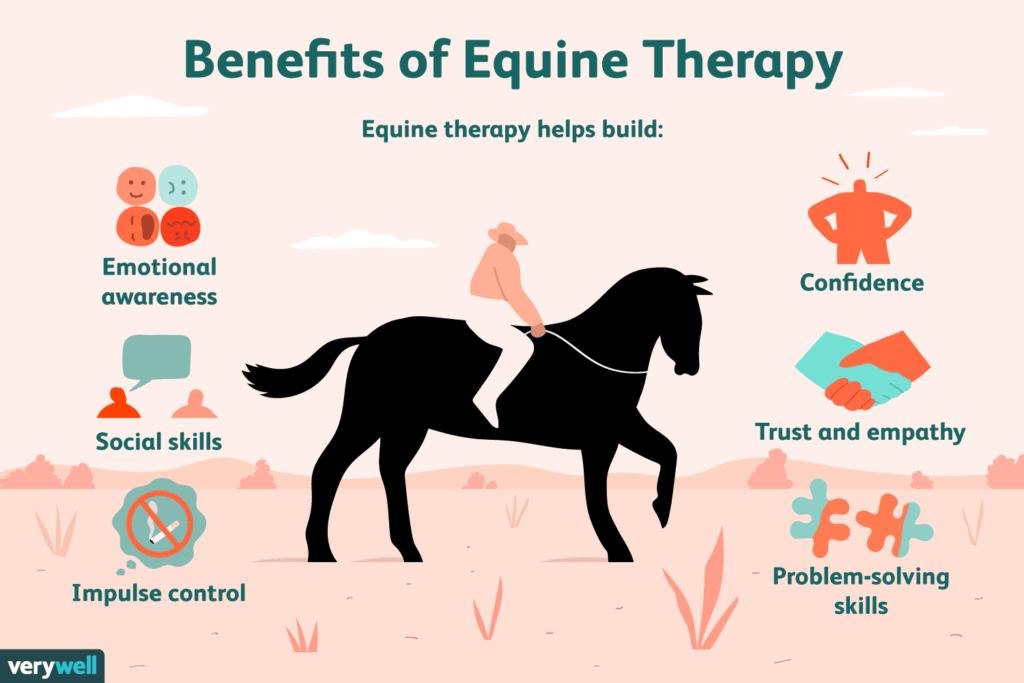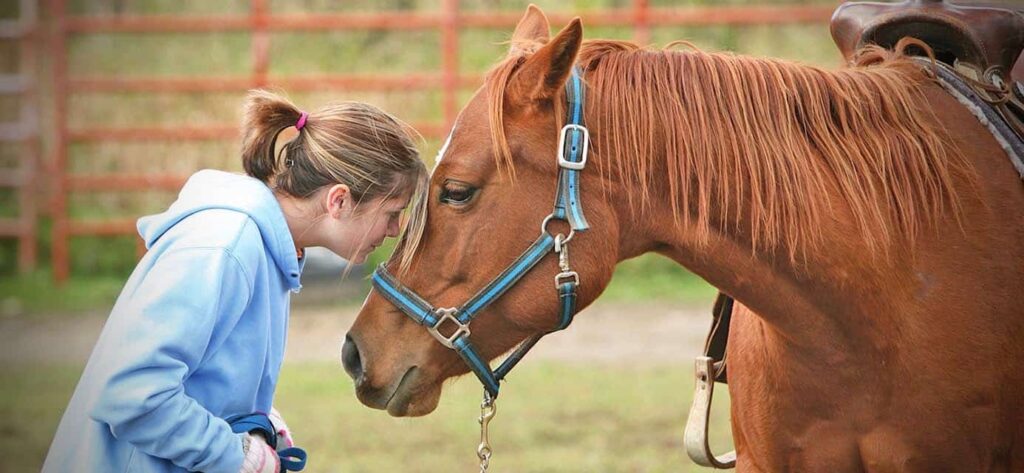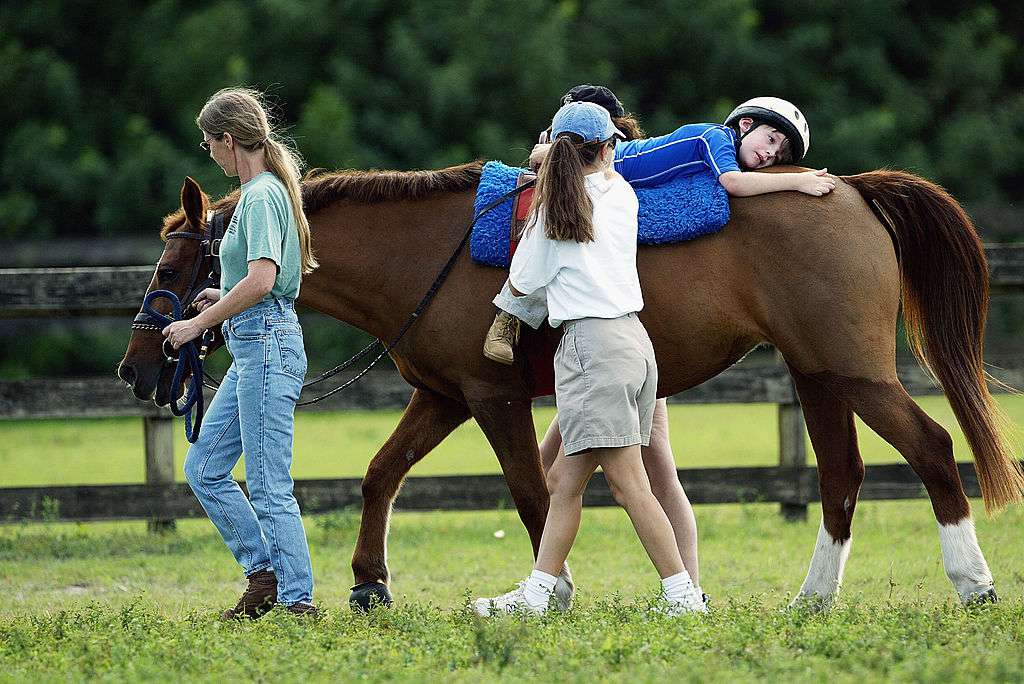In the world of therapy, there are various unconventional methods that have shown promising results in promoting emotional well-being. One such method is Equine-Assisted Psychotherapy, where horses play a crucial role in the healing process. But what exactly is the significance of horseback riding in this therapy? How does it contribute to improving mental health? In this article, we will explore the role of horseback riding in Equine-Assisted Psychotherapy and the benefits it offers to individuals seeking emotional support and personal growth.
Introduction to Equine-Assisted Psychotherapy
Welcome to an introduction to Equine-Assisted Psychotherapy! In this article, we will explore the fascinating world of using horses in therapy, also known as equine-assisted psychotherapy. This unique approach combines traditional psychotherapy techniques with interactions with horses to promote emotional growth and personal development.
1. Understanding Equine-Assisted Psychotherapy
1.1 Definition and Purpose
Equine-Assisted Psychotherapy (EAP) is a form of therapy that involves the collaboration between therapists, mental health professionals, and horses. The primary goal of EAP is to help individuals, couples, families, and groups improve their emotional well-being and mental health through interactions and activities with horses.
1.2 History of Equine-Assisted Psychotherapy
The roots of equine-assisted therapy can be traced back to the early 1900s when horses were utilized in Europe for therapeutic purposes. During World War I, horses were used to help wounded soldiers recover physically and emotionally. Since then, the field has evolved and expanded, incorporating various therapeutic approaches and techniques.

2. The Role of Horseback Riding in Equine-Assisted Psychotherapy
2.1 How Horses Facilitate Healing
Horses have a unique ability to perceive human emotions, making them excellent partners in therapy. Their sensitivity to non-verbal communication and their inherent calming presence create an environment conducive to healing and personal growth. Horses can reflect and respond to human emotions, acting as mirrors that allow individuals to gain insight into their own feelings and behaviors.
2.2 Benefits of Horseback Riding in Therapy
Horseback riding itself can have numerous therapeutic benefits. The rhythmic motion of riding can be soothing and therapeutic, reducing stress and anxiety. The physical activity of riding also releases endorphins, which can improve mood and promote overall well-being. Riding horses can also help individuals develop balance, coordination, and posture, contributing to physical strength and confidence.
3. The Connection Between Horses and Humans
3.1 The Power of the Human-Horse Bond
The bond that can develop between humans and horses is often described as profound and transformative. Horses are highly social animals and have a natural inclination to form connections with humans. This bond can provide a sense of companionship, trust, and emotional support, which are essential elements in the therapeutic process.
3.2 Non-Verbal Communication with Horses
One of the unique aspects of equine-assisted psychotherapy is the emphasis on non-verbal communication between humans and horses. Horses are incredibly perceptive and responsive to non-verbal cues, such as body language and energy. Through interacting with horses, individuals can learn to enhance their non-verbal communication skills, fostering better relationships and emotional awareness.

4. Horseback Riding as a Therapeutic Tool
4.1 Riding as a Form of Physical Exercise
Horseback riding is not only an enjoyable activity but also a form of physical exercise. Engaging in this activity can improve cardiovascular health, muscle strength, and flexibility. The combination of physical exertion and connection with the horse can release endorphins, promoting relaxation and improving mental well-being.
4.2 Building Trust and Confidence through Riding
Riding a horse requires trust, as individuals place their safety and well-being in the hands of the horse. Through the process of learning to ride and communicate effectively with the horse, individuals can develop a strong sense of trust and confidence. This newfound trust can extend beyond the therapy session, positively impacting other areas of life and relationships.
5. Techniques Used in Equine-Assisted Psychotherapy
5.1 Ground-Based Activities
Equine-assisted therapy includes various ground-based activities that do not involve riding. These activities may include grooming, leading, or simply spending time with the horse. Ground-based activities can help individuals develop self-esteem, problem-solving skills, and emotional regulation.
5.2 Mounted Activities
Mounted activities involve horseback riding and can be a powerful tool in equine-assisted psychotherapy. Therapists may guide individuals through exercises and tasks while on horseback to address specific therapeutic goals. Riding can provide individuals with a sense of accomplishment, empowerment, and liberation.

6. Choosing the Right Horse for Therapy
6.1 Characteristics of Suitable Therapy Horses
Not every horse is suitable for equine-assisted therapy. Therapy horses must possess specific characteristics, such as a calm and patient temperament, to ensure the safety and the success of the therapy sessions. Horses with the ability to connect with humans, while being responsive and well-trained, are ideal for this type of therapy.
6.2 Horse Selection Process
The process of selecting therapy horses involves careful evaluation and assessment. Trained professionals consider factors such as age, temperament, and training history when choosing suitable horses for therapy. Horses undergo thorough screenings and behavior assessments to ensure they meet the requirements and can provide optimal support for the therapeutic process.
7. Training and Certification for Equine-Assisted Therapy
7.1 Requirements for Therapists
Therapists practicing equine-assisted psychotherapy must have a solid foundation in traditional therapeutic techniques. In addition, they undergo specialized training to learn how to incorporate horses into their practice effectively. They must possess a deep understanding of horse behavior, human-animal interactions, and the principles of equine-assisted therapy.
7.2 Training Programs for Professionals
Various training programs and certifications are available for professionals interested in integrating equine-assisted therapy into their practice. These programs cover topics such as horse behavior, safety protocols, therapeutic approaches, and ethics. Completion of these programs prepares therapists to provide safe and effective equine-assisted psychotherapy services.

8. Case Studies and Success Stories
Equine-assisted psychotherapy has shown positive results in numerous case studies and success stories. These stories highlight the transformative potential of working with horses in therapy. From improving self-esteem and emotional regulation to enhancing communication skills and fostering personal growth, the impact of equine-assisted psychotherapy can be truly remarkable.
9. Ethical Considerations in Equine-Assisted Psychotherapy
As with any form of therapy, there are ethical considerations that need to be taken into account in equine-assisted psychotherapy. These considerations involve maintaining client confidentiality, ensuring the welfare and safety of both humans and horses, and adhering to professional ethical guidelines. Therapists must prioritize the well-being of their clients and conduct therapy in an ethical and responsible manner.

10. Research and Evidence-Based Approaches
Equine-assisted psychotherapy is a growing field that continues to be supported by research and evidence-based approaches. Ongoing studies explore the effectiveness of this therapy in various populations and mental health conditions. The integration of research findings helps to inform and refine the practice of equine-assisted psychotherapy, ensuring its validity and credibility as a therapeutic approach.
In conclusion, equine-assisted psychotherapy offers a unique and effective approach to mental health and personal growth. Through interactions with horses, individuals can experience healing, develop resilience, and gain insights into themselves and their relationships. The power of the human-horse bond and the therapeutic benefits of horseback riding make equine-assisted psychotherapy a valuable addition to the field of mental health.
